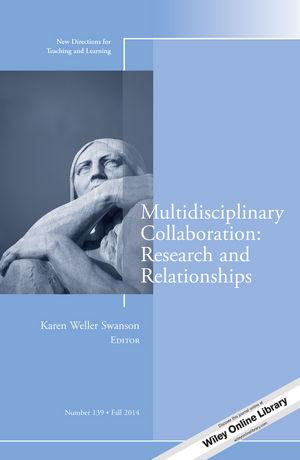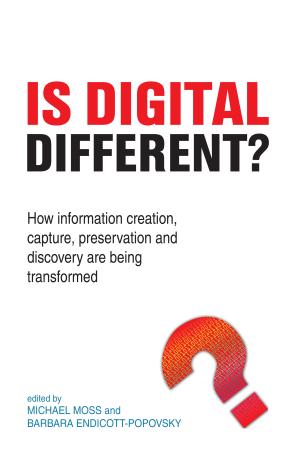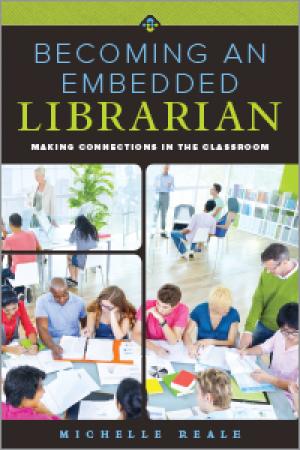Resources

This volume focuses on SoTL, the scholarship of teaching and learning. It discusses how collaborations among and between disciplines can strengthen education and the ways in which students are taught. The community of scholars at an institution can provide a fertile ground for interdisciplinary collaboration that can enliven the educational process and the research that supports it. The authors here come from many different disciplines where they teach and use SoTL to inform their own practice and share what they have done with others. This is the 139th volume of the quarterly Jossey-Bass higher education series New Directions for Teaching and Learning. It offers a comprehensive range of ideas and techniques for improving college teaching based on the experience of seasoned instructors and the latest findings of educational and psychological researchers. (From the Publisher)

Click Here for Book Review The higher education landscape is rapidly evolving due to changes in the student population (millenials, increasing diversity, changing work habits), technology (the rise in the use of social media) and learning spaces (the increase in physical and virtual social learning spaces). Allan presents the first book to bring together recent developments in both theory and practice, covering a wide range of tools and techniques which will suit students in different contexts, from large groups of 500+ to very small classes of research students. Making extensive use of case studies, examples, checklists, and tables, this practical book contains: - an analysis of the current higher education landscape, the changes that are occurring and the diverse nature of student populations; - an exploration of new theories of digital literacy including case studies demonstrating how library and information workers have applied these models in practice; - a demonstration of the many different ways in which academic library and information services are working in support of student employability; - a theoretical overview of different approaches to teaching and learning including Kolb's learning cycle, Laurillard's conversational framework for university teaching, Entwistle's teaching for understanding at university, Land and Meyer's threshold concepts and the Higher Education Academy's work on flexible pedagogies; - practical guidance on designing, developing and evaluating courses and other learning and teaching events in different situations including face-to-face, flipped classroom, blended learning, and online learning; and an exploration of approaches to personal and professional development including 90+ approaches to workplace learning; accredited courses; short courses, conferences and workshops; - networking through professional organizations; and developing online networks. This book will be essential reading for different groups working in colleges and universities including library and information workers, staff developers, educational technologists, educational development project workers, educational change agents and students of library and information science who are planning their careers in higher education institutions. (From the Publisher)

Click Here for Book Review Abstract: Academic libraries are in the midst of significant disruption. Academic librarians and university administrators know they need to change, but are not sure how. Bits and pieces of what needs to happen are clear, but the whole picture is hard to grasp. Reimagining the Academic Library paints a simple straightforward picture of the changes affecting academic libraries and what academic librarians need to do to respond to the changes would help to guide future library practice. The aim is to explain where academic libraries need to go and how to get there in a book that can be read in a weekend. David Lewis provides a readable survey of the current state of academic library practice and proposes where academic libraries need to go in the future to provide value to their campuses. His primary focus is on collections as this is the area with the greatest opportunity for change and is the driver of most library cost. Lewis provides an accessible framework for thinking about how library practice needs to adjust in the digital environment. The book will be useful not only to academic librarians, but also for librarians to share with presidents and provosts who a concise source for understanding where and how to focus their expenditures on libraries. (From the Publisher)

Teaching Information Literacy Threshold Concepts: Lesson Plans for Librarians is a collection designed by instruction librarians to promote critical thinking and engaged learning. It provides teaching librarians detailed, ready-to-use, and easily adaptable lesson ideas to help students understand and be transformed by information literacy threshold concepts. The lessons in this book, created by teaching librarians across the country, are categorized according to the six information literacy frames identified in the ACRL Framework for Information Literacy in Higher Education (2015). This volume offers concrete and specific ways of teaching the threshold concepts that are central to the ACRL Framework and is suitable for all types of academic libraries, high school libraries, as well as a pedagogical tool for library and information schools. (From the Publisher)

This edited collection brings together global experts to explore the role of information professionals in the transition from an analogue to a digital environment. The contributors, including David Nicholas, Valerie Johnson, Tim Gollins and Scott David, focus on the opportunities and challenges afforded by this new environment that is transforming the information landscape in ways that were scarcely imaginable a decade ago and is challenging the very existence of the traditional library and archive as more and more resources become available on line and as computers and supporting networks become more and more powerful. By drawing on examples of the impact of other new and emerging technologies on the information sciences in the past, the book emphasises that information systems have always been shaped by available technologies that have transformed the creation, capture, preservation and discovery of content.  Key topics covered include: • Search in the digital environment • RDF and the semantic web • Crowd sourcing and engagement between institutions and individuals • Development of information management systems • Security: managing online risk • Long term curation and preservation • Rights and the Commons • Finding archived records in the digital age. Is Digital Different? illustrates the ways in which the digital environment has the potential to transform scholarship and break down barriers between the academy and the wider community, and draws out both the inherent challenges and the opportunities for information professionals globally. (From the Publisher)

Click Here for Book Review Abstract: Embedded librarianship is “not one size fits all,” yet many books on the subject treat it in a cold, objective manner that doesn’t adequately communicate how becoming an embedded librarian actually works in the real world. Here, Reale shares her own university classroom experiences to offer a step-by-step primer for those contemplating the practice. Demystifying what can sometimes feel intimidating to academic librarians, this down to earth resource - defines what embedded librarianship is, and isn’t; - explains why being in the classroom is so important, and how it creates communities of learning; - hows how to clarify the role of the librarian in a classroom by being a “facilitator of process”; - offers strategies for relationship building, setting goals, and honing a teaching style; and - discusses embedded librarianship and branding. Readers will feel confident applying the lessons learned from Reale’s first-hand account to their own experiences both in and out of the classroom. (From the Publisher)
This article describes the process through which the Wabash Center Guide to Internet resources in religion was conceived and developed. The resulting structure of the Guide is described, and comments are made concerning possible ways in which the Internet can contribute to the learning process in theology and religious studies. A vision for the future of this Guide or other similar efforts is also outlined.
Due to the 21st century emphasis on digital collections and electronic resources, libraries face an uncertain future. Librarians have always been teaching, but now must conquer the disparaging status treatment to which they are subjected and evolve their profession by joining their teaching faculty colleagues in classrooms on campuses.
This presentation focuses on on-line workshops that librarians developed to help teaching faculty infuse information fluency into their courses.
Perhaps the most dramatic shift in library services is the transition from a purely physical to a physical/virtual environment. This article examines how 21stC online librarians deliver reference services to students and faculty, and explores the ramifications future librarians’ education, including areas of technology, instruction, interpersonal skills, intellectual property.